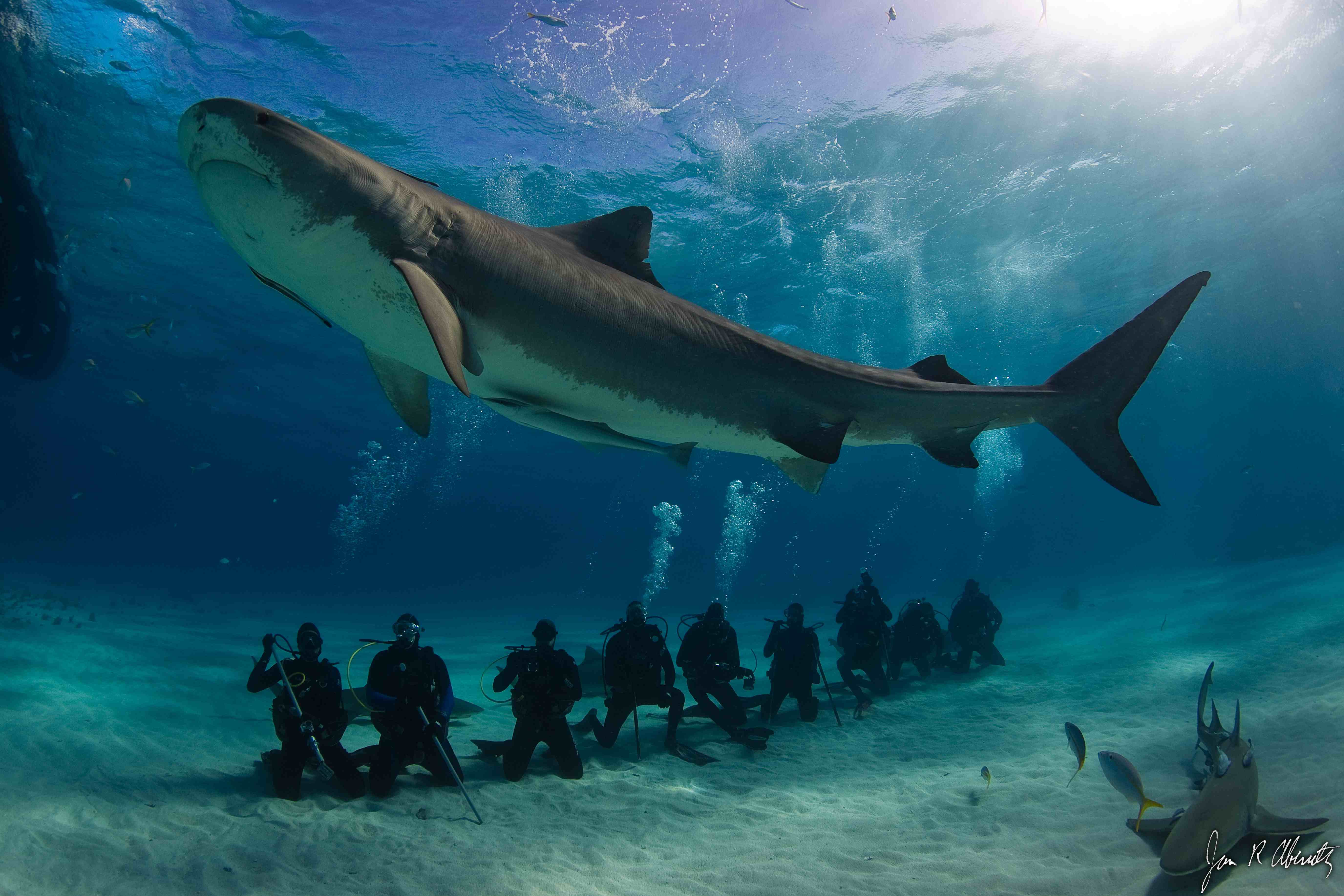 |
| Source: Sharks-World |
People have an obsession with sharks. Maybe it's their ferocity, their cold, calculating demeanor, their inordinate number of teeth, or just the fact that they exist in the water, where you can't see them until its too late. Whatever it is, you can't swing a dead cat on the internet without hitting a shark post. Here is another one.
The Sharks:
There are over 400 species of shark, and they are found around all continents except Antarctica (which hasn't been home to a shark species in 40 million years!). They are all carnivores, though their diets vary. Some species eat prey as small as zooplankton, others prey on sea turtles, or even other sharks. They live in all parts of the water column, and their sizes vary greatly. The smallest species of shark is the Dwarf Lanternshark at 8.3 inches; the largest is the Whale Shark, which can grow up to 60 feet. As far as population size goes, we don't actually know how many sharks there
are in the world. The vastness of the ocean means that it is virtually
impossible to count them. But one thing is absolutely certain, their numbers are declining alarmingly.

Their great variation makes them hard to generalize, but they've all got a few things in common. For one, multiple rows of continually growing teeth (some "working" rows and others as "backup"), which, when one falls out, another rotates in to take its place. This is only possible because, unlike humans, their teeth are rooted in their flesh. They also have no hard bones, can only swim forward, and have internal fertilization, unlike other fish species. In addition, they tend to be shy animals, which seems paradoxical in light of how much we fear them.
In 2014 there were 75 shark attacks world wide, of which 6 were fatal. More than half these (39) occurred in the USA, and over half of those (20) were in the state of Florida. No deaths occurred in the US; Australia had the most deaths with a grand total of four. Sharks killed an average of 12.2 people per year the past five years (number calculated from ISAF data), that's on par with deaths from vending machines falling on people. Also, over years of studying trends, scientists found that over 60% of all attacks occur around a full or new moon, because of its influence on the tides. We do know that the number of attacks appears to be increasing, but even with the increases the likelihood of being bitten by a shark is less than 1 in a million.
One thing you'll notice when reading about the vast
majority of attacks is that sharks don't often eat the people they've attacked. Tiger sharks are the most likely of shark species to bite more than once,
but actual man-eating sharks are very rare. Researchers are still trying to understand why they bite people at all, but it's difficult because there's no way to know
what they were doing *before* they bit a person. It's likely that some of the time they're testing to see if a person is food. It just so happens that a shark's "taste-test" is horrifying because of it's razor sharp teeth.
One suspected reason sharks attack is because of pupping season. In Hawaii, the months with the highest shark attack rates, September and November, are also the months when tiger sharks congregate around the big island to give birth. More research is needed to examine this relationship.
Though attacks do happen, sharks are more likely to not attack people they see, as can be judged by how few attacks actually happen. Even in the shark infested waters of Hawaii, where tourists flock en masse, there have been 108 attacks in 35 years. And in many cases, the shark bites the person's surfboard, or simply harasses them and leaves.

Their great variation makes them hard to generalize, but they've all got a few things in common. For one, multiple rows of continually growing teeth (some "working" rows and others as "backup"), which, when one falls out, another rotates in to take its place. This is only possible because, unlike humans, their teeth are rooted in their flesh. They also have no hard bones, can only swim forward, and have internal fertilization, unlike other fish species. In addition, they tend to be shy animals, which seems paradoxical in light of how much we fear them.
The Attacks:
Of the over 400 species known, only around 34 have been identified in unprovoked shark attacks. The three biggest offenders (number of attacks in parenthesis as of 2013) are the Great White (Carcharodon carcharias) (279), the Tiger Shark (Galeocerdo cuvier) (101), and the Bull Shark (Carcharhinus leucus) (93). Most other shark species have relatively few offences.
In 2014 there were 75 shark attacks world wide, of which 6 were fatal. More than half these (39) occurred in the USA, and over half of those (20) were in the state of Florida. No deaths occurred in the US; Australia had the most deaths with a grand total of four. Sharks killed an average of 12.2 people per year the past five years (number calculated from ISAF data), that's on par with deaths from vending machines falling on people. Also, over years of studying trends, scientists found that over 60% of all attacks occur around a full or new moon, because of its influence on the tides. We do know that the number of attacks appears to be increasing, but even with the increases the likelihood of being bitten by a shark is less than 1 in a million.
 |
| Surfer Bobby Gumm was attacked by a 17 foot great white in 2011. Source: Oregon Live |
One suspected reason sharks attack is because of pupping season. In Hawaii, the months with the highest shark attack rates, September and November, are also the months when tiger sharks congregate around the big island to give birth. More research is needed to examine this relationship.
 |
A tiger shark paying absolutely no attention to no fewer than
nine divers that it could easily mutilate.
|
Still, attacks appear to be on the rise, but the reasons seem to be pretty straight forward. The two biggest are as follows:
More people: More people are spending more time in the water. As such, in most localities the *rate* of shark attacks may not actually be increasing, what is increasing is the number of people putting themselves in contact with sharks. According to George Burgess, a shark researcher: "Human population growth is the best indicator of number of shark attacks."
A funny article titled Shark Attacks Most Likely on Sunday in 6 Feet of Water illustrates the correlation between number of people in the water and shark attacks. From the highest to lowest probability, the top three attack days are, Sunday, Saturday, and Friday. Surfers are most likely to be in the water on Sundays; Fridays could be indicative of people playing hookie from work for a three-day weekend. The worst combination is a Sunday, during a new moon.
Better coverage and reporting: This graph represents the yearly number of shark attacks in the USA since 1960, but it doesn't tell the whole story:
 |
| Source: International Shark Attack File |
Important points about this graph:
1. The apparent decrease in 1969 was due to the International Shark Attack File losing funding.
2. The apparent increase in Florida attacks after 1987 was due to increased reporting in Florida.
3. The apparent increase after 1993 was also due to an increase in reporting.
Overall, an apparent increase in shark attacks isn't always because there are actually more sharks attacking, sometimes it's because we are getting better at reporting attacks.
There is also another variable to take into account...
Chance: Periodic spikes in shark attacks are common.
Current Solutions:
1. Culling: Culling is the most known and least socially popular method of controlling human shark conflict. It is the act of selectively slaughtering animals to reduce conflict with humans. For sharks, usually nets and/or drum-lines are used. Western Australia is most well known for this method because of the media circus it caused. They caught 172 sharks from 2013-2014 and killed 50 of the largest (all tiger sharks) but ultimately the policy was scrapped after they caught none of their target species (great white). Hawaii also historically employed culling, though their program ended in in 1976 and was not considered a success. They ultimately killed 4,668 sharks. One country that still actively culls is South Africa, and the program doesn't look like it will end anytime soon. Overall, the general consensus is that culling kills more non-target animals than sharks, making the cost too great.
2. Capture and relocation: Brazil also employs drum lines, but instead of killing the sharks, they tag them and release them off shore.
3. Anti-shark wet-suits: These are wetsuits that make people invisible or uninteresting to sharks. Some suits play on the fact that sharks are colourblind, so they are various shades of blue to blend a person in with the water column. Other suits are black and white striped, which makes a diver look like an unpalatable food item.
 |
| Anti-shark wetsuits. Source: PRI |
4. Electrical deterrents: These play on the fact that all sharks have little gel filled sacs in their snout. These are used to detect electrical fields from prey, but certain electrical fields can cause them discomfort and muscle spasms. These devices produce these fields, theoretically keeping the wearer safe. Shark Shield is one such device, another is Shark Shocker.
5. Shark Spotter Planes: In South Australia planes are employed to fly over the coast and spot sharks near the shore. The folks on board than tell the authorities are beach goers are warned.
5. Shark Spotter Planes: In South Australia planes are employed to fly over the coast and spot sharks near the shore. The folks on board than tell the authorities are beach goers are warned.
The increase in attacks is definitely something to keep an eye on, who knows what new research will show. But, overall it appears that all the hype surrounding shark attacks is just that, hype. Still, the deterrent devices people are inventing are great, if only to ease people's minds and make their time in the water that much better.
cool af this one yet scary
ReplyDeleteThis is really nice blog if you are also searching for more information about wildlife safari and tour so just visit on this link- Thanks for your lovely blog which helps us a lot if you are searching for a packers and movers so just visit on this link- wildlife tour in India
ReplyDelete